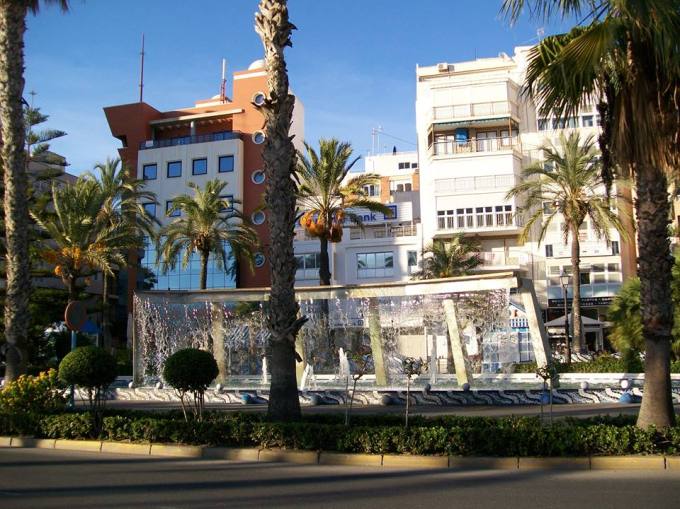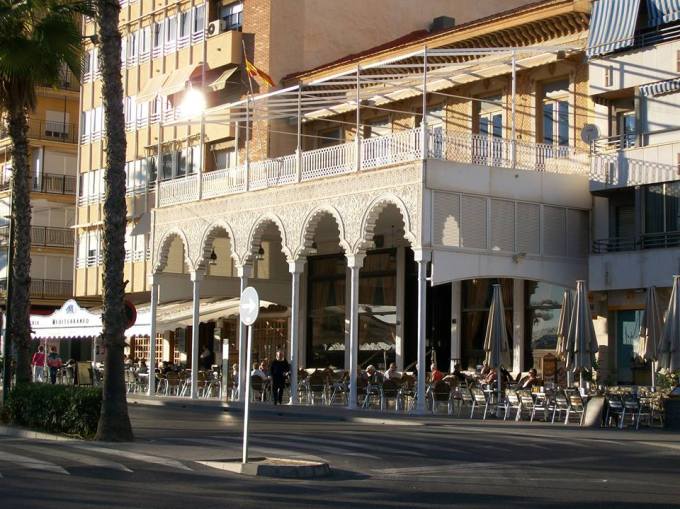The town of Torrevieja is a short drive from our house. The small city dates back to 1802 and is named after the old watch tower (Torre = tower and Vieja = old). Large cities with high rise are not my kind of place but to my surprise I find I like many parts of this particular city.

The buildings are, in the main, not that tall. In fact smaller than other large tourist towns I know well in the northern Costa Blanca such as Calpe, Denia, Javea and of course, Benidorm (which I don’t know well as one visit was enough!). The place is truly international with influences from as far apart as Italy and the Caribbean, with one of the most diverse populations in Spain. In 2014 the population is recorded as around 108,000, of which around half are Spanish and the rest a wide mix from across the globe. Native English speakers make up about 11%-12% of the total population, which is pretty much in line with the overall percentage in Spain in most coastal areas, but lower than some other coastal towns. To give you some idea of how the town has expanded the current population is around four times larger than in 1990 and twice that of 2000.
The town’s blue flag beaches, long promenade, fishing port, yacht club and harbour make up the sea front. Much of the tourist area of town has undergone an up-date with new pedestrianised areas, new theatre, new out of town concert venue, new tourist information office and much more. The narrow streets are packed with individual shops and bars run by the Spanish, not ex-pats, with residential apartments above, many to only five storeys. The town has somehow maintained its identity whilst catering for international visitors which swell its number to 500,000 in high season.
Perhaps one of our favourite pass-times when we go to Torrevieja is to visit Valors and enjoy their chocolate y churros, on the opposite side of the road to the square by the church of the Inmaculata Conception. The original church, like much of the town, was destroyed by a major earthquake in 1829 and the current church was built in 1844 using the stones from the original watch tower (Torre) in the foundations. If you have children then the fun fair and Park of Nations are a must. Or if you prefer more cultural surroundings then have a coffee in the Casino (which is not a casino but a restaurant and art gallery and social centre). If you are there for the right week in August then you can experience the Habaneras Festival which has been run annually in the city for over 40 years. This is a music festival and competition where the music is a fusion of Cuban and Spanish.

Torrevieja grew from the salt industry, still a major employer, producing half a million tons of salt a year. There are two lakes, Laguna Salada de la Mata and Laguna Salada de Torrevieja, but they are more commonly known as the blue lake and the pink lake. The Parque National surrounds the blue (La Mata) lake while the pink lake is a hive of industry on one side. The lakes, together with the Mar Menor to the south and the Santa Pola salt lakes to the north, create a unique micro climate, one the World Health Organisation lists as one of the healthiest in the world; particularly good for those who suffer with joint or respiratory problems. Combined with the warm average winter temperatures (higher than the Costa del Sol and several degrees warmer than north Costa Blanca) of over 10 degrees (usually upper teens in the daytime), 320 days of sunshine and frost being virtually unheard of, you cannot better the climate in Europe.
http://www.aipp.org.uk/members/spanish-dream-property-beverley-townsend/2

No comments:
Post a Comment